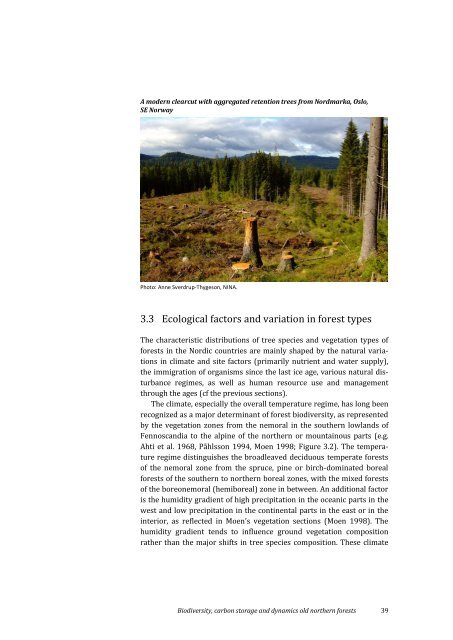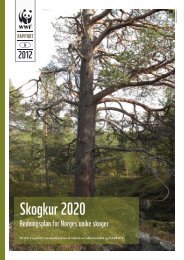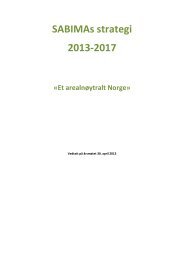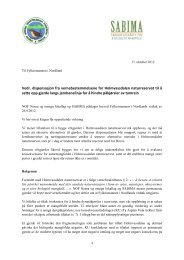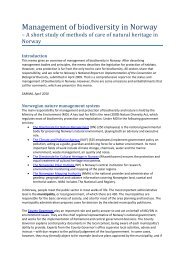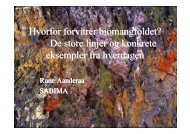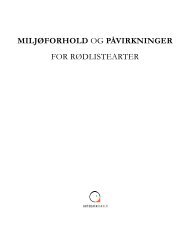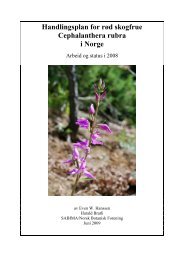Biodiversity, carbon storage and dynamics of old northern ... - BPAN.fi
Biodiversity, carbon storage and dynamics of old northern ... - BPAN.fi
Biodiversity, carbon storage and dynamics of old northern ... - BPAN.fi
Create successful ePaper yourself
Turn your PDF publications into a flip-book with our unique Google optimized e-Paper software.
A modern clearcut with aggregated retention trees from Nordmarka, Oslo,<br />
SE Norway<br />
Photo: Anne Sverdrup-Thygeson, NINA.<br />
3.3 Ecological factors <strong>and</strong> variation in forest types<br />
The characteristic distributions <strong>of</strong> tree species <strong>and</strong> vegetation types <strong>of</strong><br />
forests in the Nordic countries are mainly shaped by the natural variations<br />
in climate <strong>and</strong> site factors (primarily nutrient <strong>and</strong> water supply),<br />
the immigration <strong>of</strong> organisms since the last ice age, various natural disturbance<br />
regimes, as well as human resource use <strong>and</strong> management<br />
through the ages (cf the previous sections).<br />
The climate, especially the overall temperature regime, has long been<br />
recognized as a major determinant <strong>of</strong> forest biodiversity, as represented<br />
by the vegetation zones from the nemoral in the southern lowl<strong>and</strong>s <strong>of</strong><br />
Fennosc<strong>and</strong>ia to the alpine <strong>of</strong> the <strong>northern</strong> or mountainous parts (e.g.<br />
Ahti et al. 1968, Påhlsson 1994, Moen 1998; Figure 3.2). The temperature<br />
regime distinguishes the broadleaved deciduous temperate forests<br />
<strong>of</strong> the nemoral zone from the spruce, pine or birch-dominated boreal<br />
forests <strong>of</strong> the southern to <strong>northern</strong> boreal zones, with the mixed forests<br />
<strong>of</strong> the boreonemoral (hemiboreal) zone in between. An additional factor<br />
is the humidity gradient <strong>of</strong> high precipitation in the oceanic parts in the<br />
west <strong>and</strong> low precipitation in the continental parts in the east or in the<br />
interior, as reflected in Moen’s vegetation sections (Moen 1998). The<br />
humidity gradient tends to influence ground vegetation composition<br />
rather than the major shifts in tree species composition. These climate<br />
<strong>Biodiversity</strong>, <strong>carbon</strong> <strong>storage</strong> <strong>and</strong> <strong>dynamics</strong> <strong>old</strong> <strong>northern</strong> forests 39


